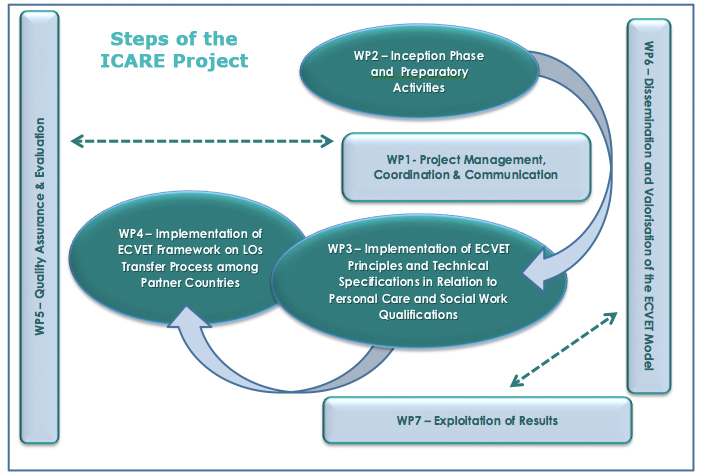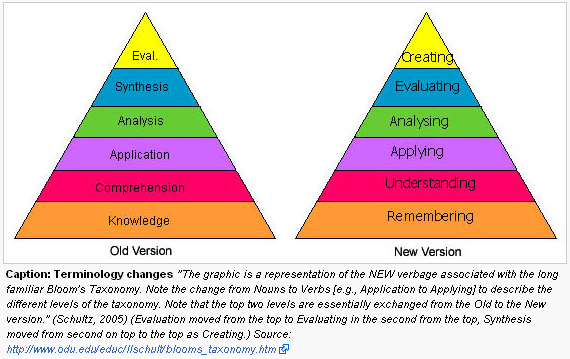4. Planning and developing the mobility project application
Dear Friend,
In the previous unit, you had the opportunity to specify your project needs, participant profile and the most promising funding schemes and grants. This unit details the main parts of this mobility project. We will go through the main parts of an application, the most important factors to achieve a good outcome, the breakdown of activities and the role of indicators. You will also have the opportunity to develop your project proposal. Do not forget, this is still a pencilled plan of a few pages, which is not adjusted yet to the specific requirements, only to the needs and profile of your institution, partners, and the mobility participants. This work will be important later, if you have to apply for the grant more than once. Most of the parts will be useful in the application templates. There might be also the case that in some grant or scholarship types there are no templates, so you can use your project application directly.
Having completed this unit, you will:
- be able to list the main parts of an application;
- be able to specify the specific outcome of an application;
- have listed the main characteristics of a work plan;
- have listed the typical work packages of a mobility/scholarship work plan;
- have understood role of indicators in your work plan;
- have discovered the benefits of breaking down activities;
- have checked the templates and supporting documents of the work plan;
- developped the outcomes of the mobility;
- discussed the draft with your mentor or project partners;
- outlined the main activities of the planned mobility application;
- downloaded the templates and supporting documents for the work plan of the application;
- broken down the activities to work packages with measurable indicators;
- designed the first version of the work plan;
- discussed the draft work plan with the mentor and core partners.
You will need 90 minutes to complete the present unit
1. Main parts of the application
There are different types of grants, programs, but there are some elements that can be found in most of the application forms. The following list of elements is more relevant in the schemes when institutions and consortia of institutions are in the application, but it may be applied for individual applications as well.
- Title
and basic data of the application type
for example: Erasmus +
- Basic
data of the application
Those are the identifiers of the applicant (person or institution).
- Project
summary
Here you have to summarize the whole application.
- Detailed
description of the applicant(s)
Here you have to indicate statistical, financial and access data and profiles of the applicants: background, skills, key members of staff.
- Overall
project description
Here you can have different fields, most probably the aims and needs of the project, information on the partnership (if any) and the main topic (content) of the application.
- Detailed
description of the participants (if different from the applicants)
Profile of the participants and the selection method.
- Learning/research outcomes/achievements of the project
- Detailed
description of planning
Here you have to specify the logistical preparations of the project, management structure and contractual background, and training of the participants.
- Detailed
work programme
Here you have to describe in detail the tasks, the communication and the monitoring procedures of the project.
- The
evaluation and the impact of the project
Here you have to specify the tools of measurement and the scope? of the change caused by the project (local, regional, or national)
- Budget
Here you have to show your financial plans in detail.
As the work program and the budget is more sophisticated we will go in detail later, but for the other parts it is time to check whether you have all information you will need for a specific application.
Activity 1– Check your available data
- Looking at the possible project opportunities, please check the relevant parts of the previous list and create your own short list.
- Check if there are other, not listed, parts of the application that you will have to deal with, during the application writing phase.
- Try to discover the data that you have not collected yet from partners and the participants to be able to write meaningful content in the different parts.
You may share your ideas with your mentor or in your blog.
In most of the grants you will be asked to write about the objectives, goals, or outcomes of the project. how to write a good outcome?
2. Specificities of a good objective/outcome
There are some basic technical rules when you write project or research objectives, learning objectives or learning outcomes.
- You have to describe the observable performance or task that the participant will be able to demonstrate and present (at the end of the project).
- You have to specify the measurable (required) level of performance.
- You have to describe the circumstances of the measurement of the performance.
The most common mistake in setting learning outcomes is to use the verbs “know” and “understand”.
Here the problem is that those verbs are not specific enough to decide whether the participant (learner) has reached the outcome. There is a big literature about writing good learning objectives and outcomes.
As in project applications it is important to be able to write measurable objectives, we invite you for a quick research in writing objectives.
Activity 2 – Verbs to use in objectives and outcomes
Do a quick research on setting “measurable educational objectives”, “Bloom taxonomy” and “active verbs”.
Write measurable sample objectives about the outcome of your programme, either research objectives or learning outcomes.
Do not spend more than 15 minutes with this short exercise.
Share your sample objectives or outcomes with your mentor and on your blog.
The next important part of a project plan is the work plan. The project plan’s heart lies in the detailed work plan and budget, so it is worth doing it with great attention.
3. Work plan and work packages
The work plan of the application can be very different at this stage. An individual long term research grant requires different tasks, work packages and indicators than a vocational school’s short term group mobility for an industrial visit.
Having said that, there are common elements in all of those cases the work programme. They:
- have to lead to the educational or research results of the project;
- have to be in close relation with all indicated needs, profile and other facts that other parts of the plan suggest;
- have to be detailed enough for later execution, and also for evaluation;
- have to contain measurable indicators;
- have to respect the grant regulations.
Activity 3 – Plan the work package categories of your mobility
- Collect the projects that have already been completed by your institution and study the work packages of them.
- Try to identify the main activities put them into a reasonable number of work packages that can be determined by name, time scale, duration, main activity and measurable indicators. Do not go into detail at this time.
Do not spend more than 15 minutes with this introductory exercise.
In the nex part of the unit we will use a shorter list of headings but you can add more headings if your case requires it.
Part I –Executive Summary
- Project title
- Basic project data
- Project outcomes
- Project summary
Part II – Details
- Overall project description (more detailed than summary)
- Description of partners (institutions): profile and needs
- Description of mobility participants: profile and needs
Part III – Work plan
Detailed description of measurable work packages: planning, work program, logistics, evaluation.
4. Executive summary
The first activity will be to author the first part of the plan and collect the basic information of the project we call now “executive summary”.
Activity 4 – Collect the summary and finalise the project outcomes.
If you have not created a file for the project plan, it is high time you do so now.
- Copy the final project title, try to figure out a good acronym.
- Copy all information about the project proposal that will be important later: applicant institution, contact info, partners, time indication etc.
- Finalise the overall aims/outcomes of your mobility project/grant application
- Copy the project summary you have drafted already.
Do not spend more than 15 minutes.
5. Details
Now you can explore all details of the organizations and contact addresses you have collected during your research work.
Activity 5 – Collect the mobility details.
- Work out a detailed description of your mobility project (half a page)
- Introduce all participant institutions in a few lines with main educational and professional characteristics, profile, their mobility needs and role in the project (copy here the already worked out parts).
- Introduce the mobility participants’ profile and needs (copy and paste your needs analysis findings here).
Do not spend more than 15 minutes.
Let us go further by breaking down the project description in work packages.
6. Work plan
Now the most detailed task is to group those data in work packages. It is not easy to generally speak about work packages, as specific programmes have templates and requirements for work packages, in some programs pre-set work packages have to be quantified. All those steps must be decided based on the specific choice of grant type. There some common elements that we can use before choosing a grant-type.
There are many possibilities in general project plans to logically sequence the work packages, such as:
- management,
- planning,
- development,
- implementation,
- dissemination and
- evaluation.
Work package structure of an educational research project: ICARE

The following structure may apply for mobility and research scholarship grants as well. In mobility applications, it is wiser to structure the work packages by logical order of the mobility programme, with some possible examples:
- Planning and organising the project before the stay: management, recruitment, travel and accommodation.
- Managing the mobility during the stay: managing groups, managing learners, managing teachers and managing industrial visits.
- Tracking and evaluating the mobility after the stay: managing communication, evaluation and valorisation.
All those work packages have to be clearly planned in a measurable way. This can be done by using timeline indications, deliverables and indicators for the work packages.
The Transdanube project: work package breakdown in activities – timeline representation

Those deliverables can include planning documents, curriculums, storyboards of visits, etc. The indicators can be: pages, learning hours, days, number of learners, etc.
Activity 6 – Develop the work packages of the plan.
This activity is more useful if you plan a mobility project:
- Start with the work packages before the stay.
- Continue with breaking down in work packages the programme of the stay.
- Finish with the activities that should be done after the stay.
This activity may last half an hour, or so. Do not forget, it is a draft only, the specific work package planning will be done when you fill-in the specific application templates.
Dear Friend,
At the end of this unit, we hope that you already drafted your project plan with all parts but the budget. The next unit is about the project budget.


